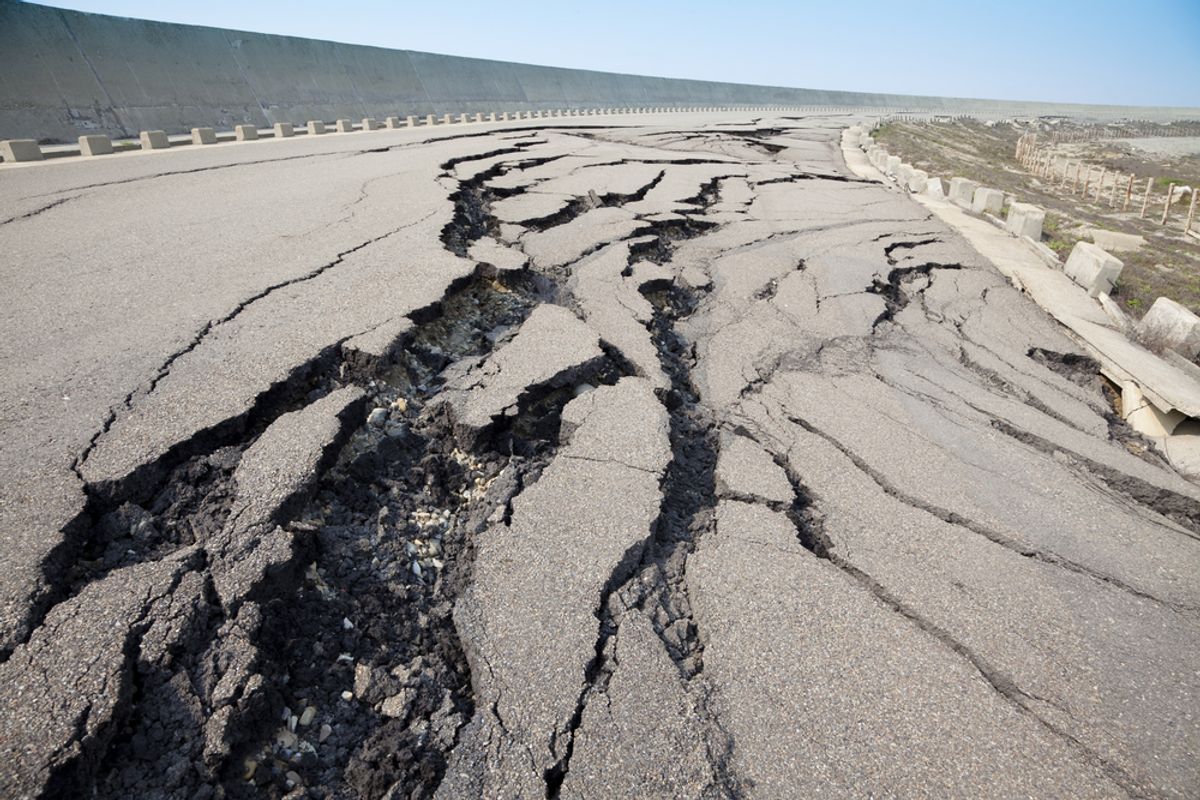Oklahoma, which will heretofore be referred to as "the new California," is continuing to undergo a spike in earthquake activity, experiencing another swarm of tremors in an incredibly short period of time.
The state's already broken annual records for 3.0 magnitude or higher earthquakes, reaching 135 by May of this year, as compared to the two such quakes it experienced, on average, between 1978 and 2008. Many of the earthquakes experienced since 2009, the U.S. Geological Survey noted, occurred near injection wells, which are used to dispose of wastewater from fracking. Earlier this month, a study published in the journal Science supported the connection, linking over 100 earthquakes experienced in the state to just four wells.
The AP has the scoop on the weekend's seismic activity, which saw seven quakes over two days:
Sunday's quakes ranged from magnitude 2.6 to 2.9 and were centered in the Guthrie, Jones and Langston areas, 15 miles to 30 miles northeast of Oklahoma City. The USGS said the quakes were recorded between 7:57 p.m. Saturday and 9:51 a.m. Sunday. No injuries or damage were reported.
Those follow four other quakes, including a 4.3-magnitude temblor near Langston recorded shortly after noon Saturday. The other Saturday morning quakes ranged in magnitude from 2.9 to 3.2.
As well as Tuesday morning's additional tremors:
The U.S. Geological Survey says a 3.8 magnitude earthquake hit 3 miles north-northeast of Harrah shortly after 2 a.m. Tuesday. About two hours later, a 3.9 magnitude earthquake struck in the same area, awakening many residents in the Oklahoma City area.
Austin Holland, a research seismologist with the Oklahoma Geological Survey, said his agency is closely monitoring seismic activity to determine whether they're natural or man-made. He noted, the AP added, that "the same drilling methods have been used in the state for years but that frequent earthquakes did not become a problem until after 2009." It's worth adding, of course, that the unprecedented increase in seismic coincides with the major uptick in natural gas drilling in the state's Woodford shale formation.
And while the quakes have been relatively small, their frequency is giving experts cause for concern. "Given the rate of earthquakes over the last six months," USGS geophysicist Rob Williams told CNN, "it's concerning enough to be worried about a larger, damaging earthquake happening."



Shares